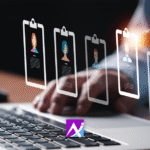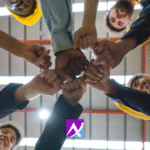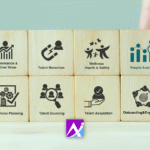Onboarding Excellence: Setting New Hires Up for Success
Did you know that 88% of employees believe their employer did a poor job with onboarding? A strong onboarding process doesn’t just make new hires feel welcome—it directly impacts engagement, productivity, and retention. The right strategy ensures employees are ramped up efficiently, reducing the time it takes to contribute meaningfully to the team. But what makes an onboarding program truly effective? Let’s break it down into actionable steps that will set your team up for long-term success.
Success Starts with Effective Onboarding
1. Clear, Step-by-Step Timeline
New hires need a roadmap to success. Without a clear plan, they can feel lost and unsure of expectations.
Example 30-60-90 Day Plan Template:
- Day 1-30: Introduction to company culture, team members, role expectations, and core training modules.
- Day 31-60: Hands-on learning, deeper involvement in projects, and scheduled feedback sessions.
- Day 61-90: Ownership of tasks, review of KPIs, and career development discussions.
Pro Tip: Assign a “Welcome Checklist” that includes key documents, software logins, and first-week tasks to make the transition smoother.
2. Break Down the Information
Avoid overwhelming new employees with too much information at once. Space out essential company policies, processes, and system training over the first few weeks.
Common Pitfall: Information overload on Day 1 leads to disengagement and forgetfulness. Instead, prioritize need-to-know details upfront and introduce more complex topics later.
3. Flexible Learning Methods
Not everyone learns the same way. Incorporate a variety of training styles:
- Quizzes to reinforce key concepts
- Role-playing scenarios to simulate real job situations
- Workshops for collaborative learning
4. Role-Specific Training
Generic onboarding isn’t enough. Tailor training to the employee’s role by focusing on the specific skills, systems, and tasks they’ll be using daily.
5. Cross-Department Learning
Introduce new hires to key people in other departments. This enhances collaboration and helps them see how their role fits into the bigger picture.
6. Ongoing Training & Support
Onboarding doesn’t stop after the first week. Offer:
- Skill-building workshops
- Leadership training opportunities
- Continued mentorship and check-ins
7. Frequent Check-Ins
Schedule regular one-on-ones with a mentor or manager during the first 30 days. This provides space for feedback, answers questions, and ensures a smooth transition.
Pro Tip: Ask open-ended questions like, “What’s been your biggest challenge so far?” to encourage honest feedback.
8. Utilize Effective Onboarding Technology
- Onboarding Software: Automate administrative tasks like document signing, training modules, and surveys.
- Learning Management Systems (LMS): Provide access to courses and track progress.
- Video Training: Pre-record company procedures, culture, and system tutorials so employees can learn at their own pace.
- Remote Onboarding Considerations: Ensure remote employees receive the same level of attention and integration as in-office employees.
Leverage Natural Wiring to Improve Onboarding
Every employee learns differently. Some absorb information best by reading, while others thrive through hands-on practice. The AcuMax Index identifies a new hire’s natural wiring, helping managers tailor onboarding experiences to how they learn best.
How to Use Natural Wiring for Faster Onboarding
- For Independent Learners: Provide self-paced training materials, video modules, and digital resources.
- For Hands-On Learners: Assign practical tasks and encourage frequent practice.
- For Social Learners: Pair them with mentors, incorporate group learning, and use interactive role-play activities.
Additional Customization Ideas:
- Autonomous Freedom: Once a new hire shows competency, allow them to complete tasks their way as long as they achieve the desired results.
- Practice Makes Perfect: Some people learn best through repetition. Assign recurring tasks to help them build confidence.
- Assign a Mentor: A dedicated mentor can speed up the onboarding process by providing direct guidance and answering questions.
- Create a Safe Space for Questions: Encourage an open-door policy where new hires can ask anything without fear of judgment.
Take Action: Elevate Your Onboarding Process
A well-organized, engaging, and supportive onboarding experience sets the stage for long-term success. By combining structured onboarding with an understanding of natural wiring, you can reduce ramp-up time, increase retention, and boost employee productivity.
Want to see how AcuMax Index can streamline your onboarding and improve retention?
Discover how natural wiring insights can reduce ramp-up time and increase productivity. Let’s customize an onboarding strategy that works for your team- Schedule a Demo Now!





